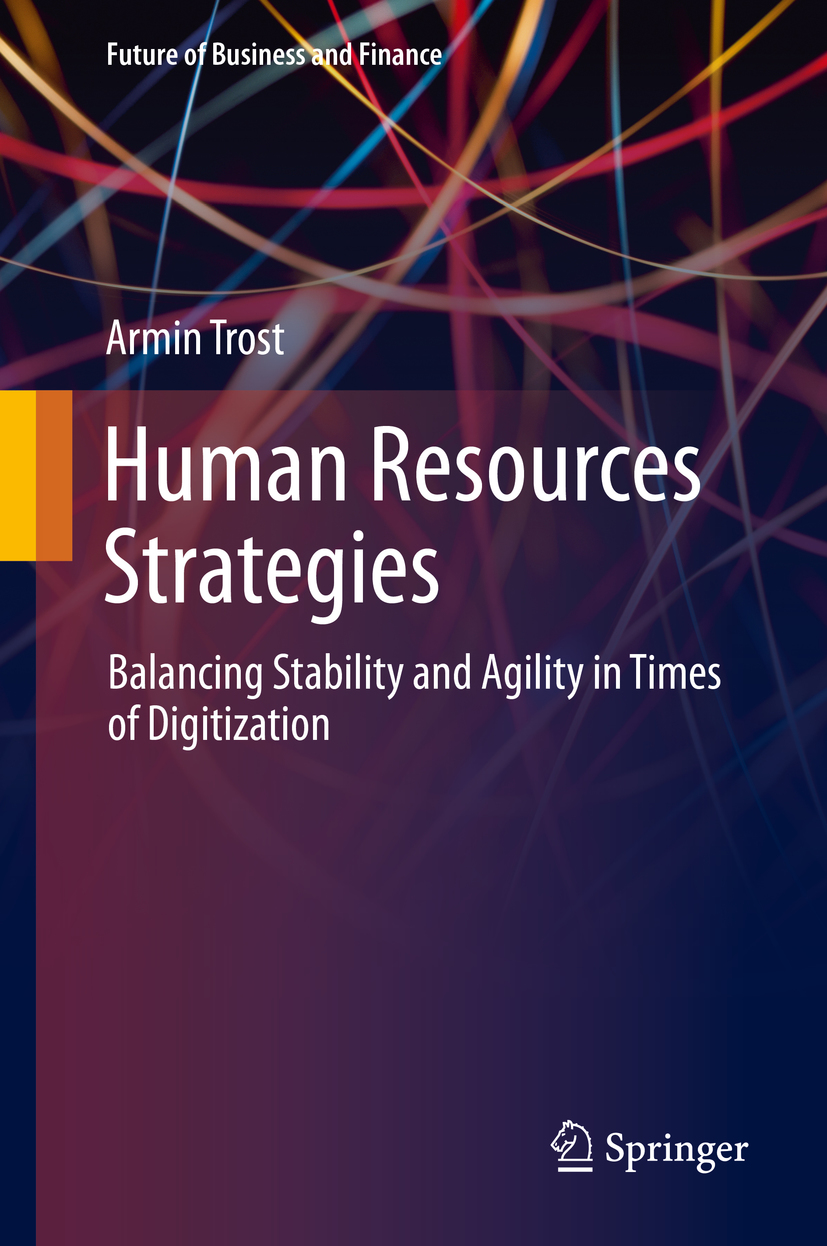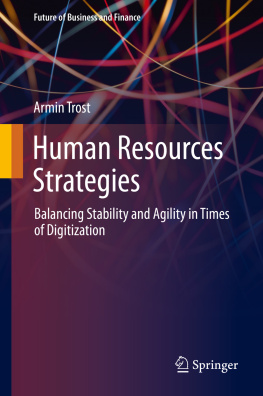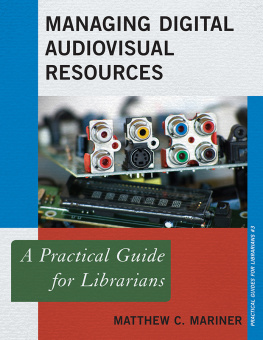Armin Trost - Human resources strategies : balancing stability and agility in times of digitization
Here you can read online Armin Trost - Human resources strategies : balancing stability and agility in times of digitization full text of the book (entire story) in english for free. Download pdf and epub, get meaning, cover and reviews about this ebook. year: 2020, genre: Business. Description of the work, (preface) as well as reviews are available. Best literature library LitArk.com created for fans of good reading and offers a wide selection of genres:
Romance novel
Science fiction
Adventure
Detective
Science
History
Home and family
Prose
Art
Politics
Computer
Non-fiction
Religion
Business
Children
Humor
Choose a favorite category and find really read worthwhile books. Enjoy immersion in the world of imagination, feel the emotions of the characters or learn something new for yourself, make an fascinating discovery.
- Book:Human resources strategies : balancing stability and agility in times of digitization
- Author:
- Genre:
- Year:2020
- Rating:5 / 5
- Favourites:Add to favourites
- Your mark:
- 100
- 1
- 2
- 3
- 4
- 5
Human resources strategies : balancing stability and agility in times of digitization: summary, description and annotation
We offer to read an annotation, description, summary or preface (depends on what the author of the book "Human resources strategies : balancing stability and agility in times of digitization" wrote himself). If you haven't found the necessary information about the book — write in the comments, we will try to find it.
Armin Trost: author's other books
Who wrote Human resources strategies : balancing stability and agility in times of digitization? Find out the surname, the name of the author of the book and a list of all author's works by series.
Human resources strategies : balancing stability and agility in times of digitization — read online for free the complete book (whole text) full work
Below is the text of the book, divided by pages. System saving the place of the last page read, allows you to conveniently read the book "Human resources strategies : balancing stability and agility in times of digitization" online for free, without having to search again every time where you left off. Put a bookmark, and you can go to the page where you finished reading at any time.
Font size:
Interval:
Bookmark:

The Future of Business and Finance book series features professional works aimed at defining, describing and charting the future trends in these fields. The focus is mainly on strategic directions, technological advances, and challenges and solutions which will affect the way we do business tomorrow. We also encourage books which focus on the future of sustainability and governance. Mainly written by practitioners, consultants and academic thinkers, the books are intended to spark and inform further discussions and developments.
More information about this series at http://www.springer.com/series/16360

This Springer imprint is published by the registered company Springer Nature Switzerland AG.
The registered company address is: Gewerbestrasse 11, 6330 Cham, Switzerland
To my dear parents
Edith and Ernst Trost
When I started studying psychology about 30 years ago, my goal was to become a family therapist. At that time I had already 2 years behind me in which I had learned to work intensively with people in a small psychiatric clinic. That was a wonderful, instructive time. At some point during my studies, I turned to industrial and organizational psychology and ended up where many of my fellow students ended up: in the training and development department of a large corporation. My career as a HR professional took its course. I implemented performance appraisal systems without ever having to ask myself what performance, on the part of the people concerned, actually means in concrete terms. I conducted employee surveys without having to take a personal interest in an employees experience. I introduced applicant tracking systems without meeting an applicant personally. In contrast to my work in a psychiatric environment, it became clear to me at some point that HR in large corporations means above all setting up processes, instruments, systems, and programs and keeping them running. All this has very little to do with working with people.
Basically, that is fine. One quickly learns and accepts that one should not be an HR professional or HR manager if one likes working with people. However, over the years my inner dislike, which somehow became silently apparent from the beginning, became ever clearer. It is not the systems themselves that turned out to be more and more unbearable for me, but the attitude with which these systems were developed and kept alive. You will find descriptions of these systems in most common textbooks about human resources managementthe annual performance appraisal , change management , competence management, talent management , etc. And I have to admit that during my studies I hated books on personnel management. There is nothing creepier than a classic textbook on human resources management. To this day, hardly anything has changed, neither in my reaction, nor in the books themselves. What is described in all these books, and mostly lived in practice, has something patronizing, not infrequently even something contemptuous of people. The employee, the human resource, is not treated as a subject here but as an object. It is measured, judged, developed (upskilled), promoted, transferred, terminated, rewarded, retained, etc. You do something with the human resource. You is the superordinate, corporate system, represented by the human resources department as the executive body. All this is done under the premise of putting the employee at the centre. What an illusion. The operator of a laying battery also puts his 10,000 chickens at the centre.
Then I, of all people, became a professor of human resources management. Looking back, this was the ideal time. Companies slowly woke up and began to rethink. In the beginning, there was a shortage of skilled workers, and suddenly we had to learn to value applicants and candidates, to be interested in their preferences, and to apply to them and not vice versa. My first book appeared: Employer Branding . How can we convince as an employer? Then followed the book Talent Relationship Management . After writing other books, I started to work on a particularly incapacitating HR instrument, namely the annual performance appraisal . The book The End of Performance Appraisal appeared and nothing pleased me more than the great irritation , coupled with broad, positive resonance, that it brought. Ive been really lucky over the past few years because a gradual awakening in the HR community has become more and more visible. New generations of HR people took the helm, supported by new generations of executives. Throughout the years I found it a wonderful task to throw coals into the blazing fire again and again, critically, provocatively but always constructively, and close to practice. It seemed as if my attitude and the zeitgeist had met, and I was allowed to play an active role in this development.
How very much I now welcome the growing debate on the subject of agility . For me, agility is much more than just a buzzword. It symbolizes a long overdue development towards a changing attitude : the employee as a mature human being. My great role model, Douglas McGregor, is being turned to again, and rarely was his juxtaposition of the Theory X humans are lazy by nature and have to be kept on a short leashand the humanistic opposite, of Theory Y , more important and alive than now. In the course of this development, it was my great dream to finally write a comprehensive book that would deal with HR from the point of view of Theory X versus Theory Y. What does HR look like in a traditional, hierarchical, and stable enterprise, and how are things presented in a more agile context? What an exciting question! Writing this book was a matter of real concern to me. Here we are talking about much more than just the image of a mature human being. It is ultimately a question of the competitiveness of many proud companies. I share the view that agility is a prerequisite for the majority of companies to survive in current and future markets. And human resources management plays a key role in this.
Font size:
Interval:
Bookmark:
Similar books «Human resources strategies : balancing stability and agility in times of digitization»
Look at similar books to Human resources strategies : balancing stability and agility in times of digitization. We have selected literature similar in name and meaning in the hope of providing readers with more options to find new, interesting, not yet read works.
Discussion, reviews of the book Human resources strategies : balancing stability and agility in times of digitization and just readers' own opinions. Leave your comments, write what you think about the work, its meaning or the main characters. Specify what exactly you liked and what you didn't like, and why you think so.










